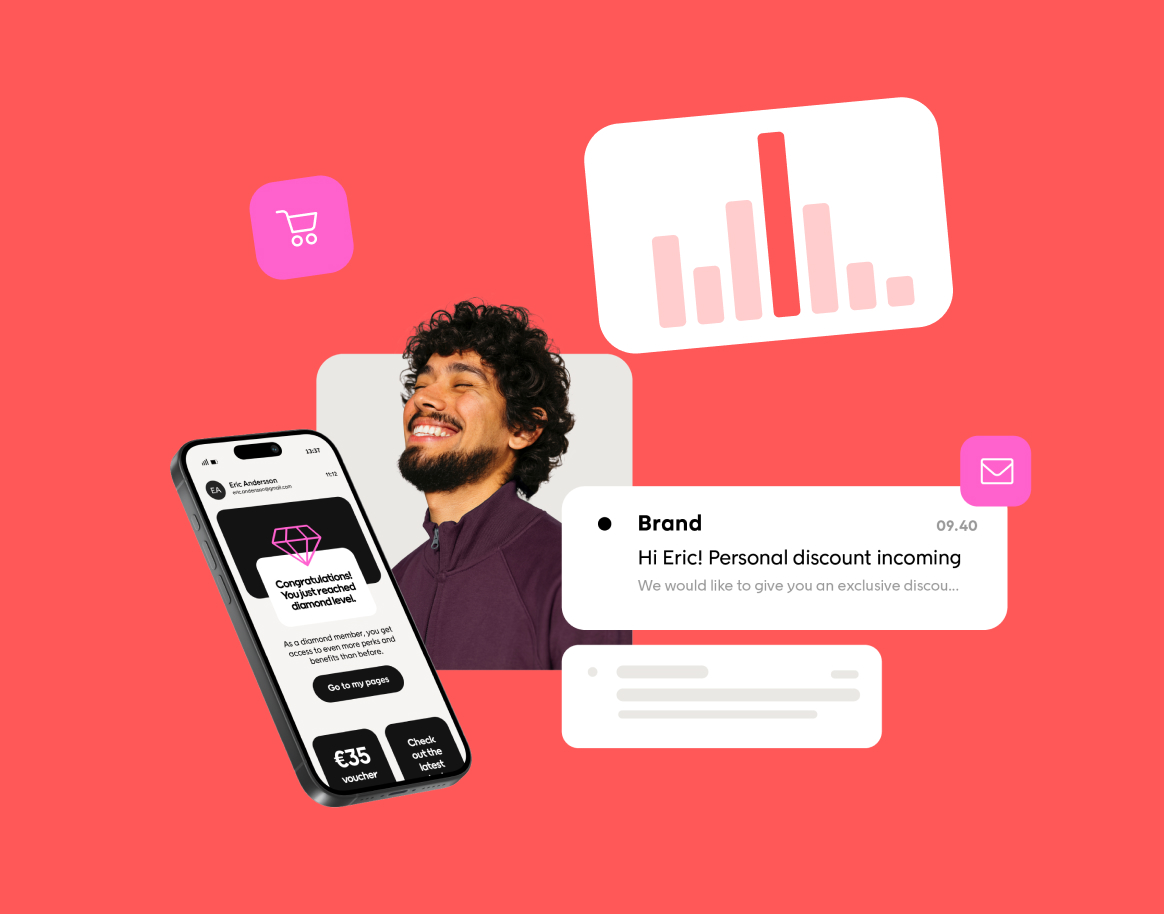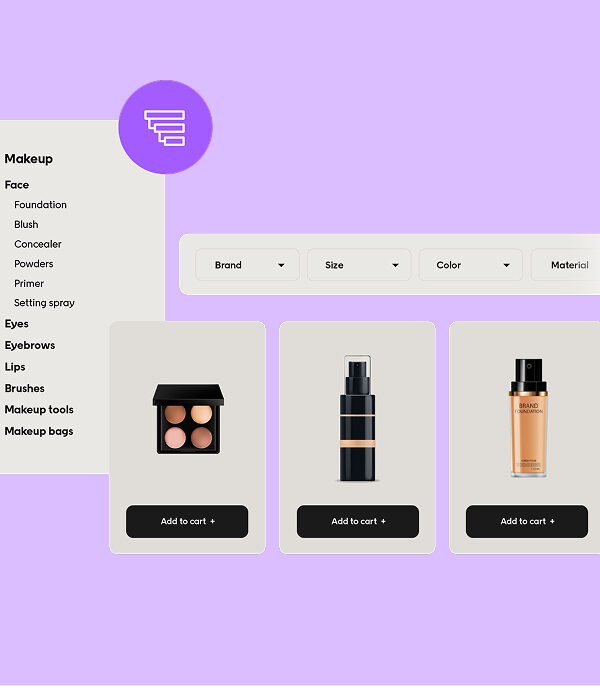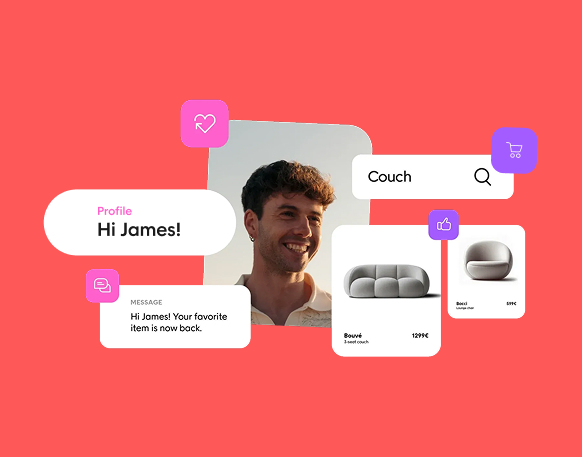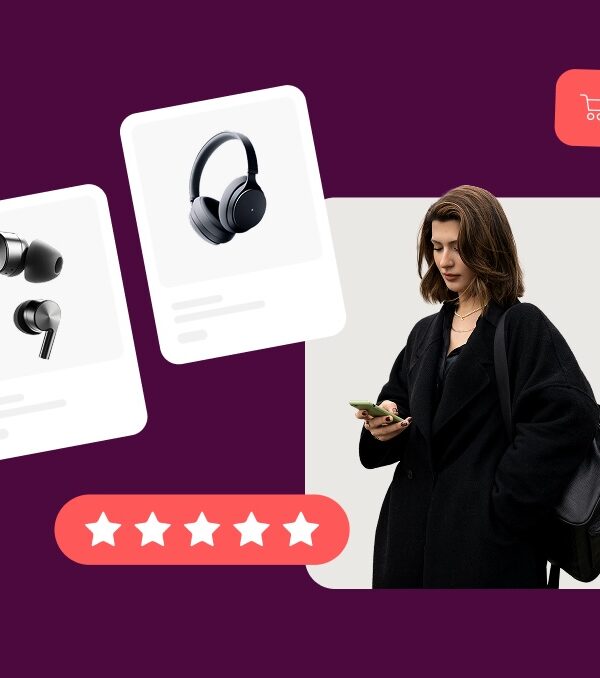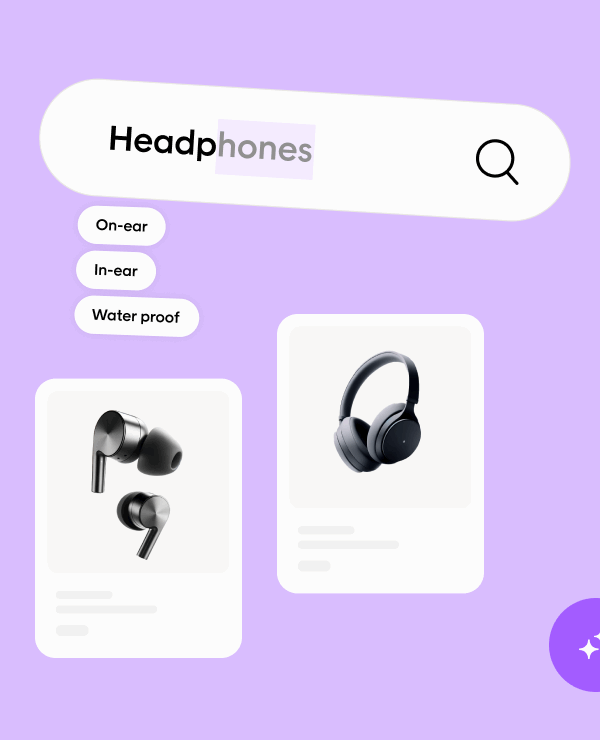TL;DR
- Purchase frequency is how often your unique customers buy from you in a given period.
- To calculate purchase frequency, divide total orders by the number of unique customers in the same time frame.
- Lifting purchase frequency improves customer retention, repeat purchase rate, average order value, and long-term revenue.
- Diagnose before you optimize by looking at seasonality, RFM, and baseline KPIs.
- Fast wins include replenishment journeys, welcome-to-second-order plays, loyalty cadence perks, and targeted email marketing campaigns.
Getting customers to buy once is easy.
Getting them to come back for more frequent purchases is where retail and e-commerce brands win today.
Most teams focus on repeat purchase rate, customer retention, or average order value. But purchase frequency is the metric that connects all three.
When you improve it, you build a loyal customer base, create a steady revenue stream, and help existing customers form real buying habits with your brand.
The best part is that you can influence purchase frequency with simple, practical steps.
Today, you’ll learn what purchase frequency means, how to calculate it, and how e-commerce businesses like yours can use real customer behavior to encourage repeat purchases and drive future purchases sooner.
Let’s start with the basics.
What is purchase frequency?
Purchase frequency is the average number of times a typical customer purchases from your store over a given period.
It’s a simple way to understand customer behavior, customer retention, and how your marketing efforts support repeat purchases.
A higher purchase frequency means customers return sooner. They make more repeat purchases and become part of a loyal customer base.
A lower purchase frequency shows gaps in your customer experience or post-purchase journeys.
The formula
Purchase frequency = Total orders in period ÷ Number of unique customers in period
This formula works for any time frame. Most retail and e-commerce brands use monthly, quarterly, or yearly windows to understand how many unique customers made multiple purchases.
Purchase frequency vs repeat purchase rate
Here’s the easiest way to see the difference:
| Metric | What it shows | How it helps |
| Purchase frequency | The average number of orders all customers make in a specific period | Shows buying habits and customer purchase frequency |
| Repeat purchase rate | The % of customers who place at least two orders | Shows how many customers come back at least once |
Real-world example:
- You have 100 unique customers in a given period.
- They placed 180 total orders.
- Of those customers, 45 made at least two purchases.
Your purchase frequency is 180 ÷ 100 = 1.8.
Your repeat purchase rate is 45 / 100 = 45%.
Both metrics matter. Purchase frequency shows how often customers buy and how strong your repeat business is.
Repeat purchase rate shows how many customers make multiple purchases.
With the basics in place, it’s time to see what’s driving your current purchase frequency. A quick diagnosis will show you where to focus first.
How to measure purchase frequency and diagnose your customer behavior
Before you try to increase purchase frequency, you need a clear view of your customer behavior.
A simple diagnosis shows where your average purchase frequency sits today, how steady your repeat business is, and which customer segments need attention first.
It also gives you a baseline to measure purchase frequency over time.
Here’s how to see your real frequency purchase patterns, your average purchase frequency rate, and the early signs of churn.
Pick the right time window
Different retail categories have different buying habits. If you choose the wrong time period, your average purchase frequency will look misleading.
Here’s a simple guide:
| Category type | Recommended time frame | Why it matters |
| Fashion and beauty | 12 months | Seasonal buying and long gaps between orders |
| Homeware and higher-ticket items | 12–18 months | Less frequent purchases, slower repeat rates |
| Low-cost consumables | 3–6 months | Higher customer purchase frequency and faster rebuys |
| Everyday essentials | 30–90 days | Stable buying cycle and predictable reorder patterns |
A clear time window makes it easier to calculate purchase frequency and compare your sales data over the same period.
You can use the Voyado data tools to dig deeper and see how your patterns match the wider market through benchmarks for retail marketers.
Segment by RFM
Once you know your time frame, segment your customers with Recency, Frequency, and Monetary (RFM). This highlights which customers return quickly, which ones slow down, and which ones need a nudge.
A simple view:
| Segment | What it tells you |
| Recent–High–Monetary | Strong repeat customers with high purchase value |
| Recent–Low–Monetary | New or low-spend customers who need early motivation |
| Aging–High–Monetary | High-value customers slipping away |
| Aging–Low | At risk of churn and needs stronger retention efforts |
These segments give you valuable insight into customer retention and help you spot where you can improve purchase frequency fast.
Spot cliff edges
A cliff edge is the point where customers are most likely to drop off. Look at days since last purchase to see when customers stop returning.
This frequency of purchase example shows how it works:
| Days since last order | What it means |
| 0–30 | Normal repeat pattern |
| 31–60 | Engagement drops |
| 61–90 | Rising churn risk |
| 90+ | High churn segment |
You can also look at the frequency purchase pattern in each segment to see where customers naturally slow down and when they need a nudge to return.
Cliff edges show when to encourage customers with the right nudge, whether through email marketing campaigns, loyalty perks, or targeted product recommendations.
Baseline KPIs to track weekly
Tracking the right KPIs gives you a clear view of your current customer purchase frequency and how well your marketing efforts support repeat purchases.
The most useful weekly metrics include:
- Average purchase frequency
- Repeat purchase rate
- Time to second order
- Reorder rate by category
- Revenue share from returning customers
Comparing your sales data to others in your market can help you understand whether your current purchase frequency is above or below typical benchmarks.
Once you know where your gaps are, it becomes much easier to choose the tactics that drive more frequent purchases.
Tactics to increase purchase frequency fast
You’ve figured out your gaps. It’s time to take practical steps to increase purchase frequency, support customer retention, and move customers toward more frequent purchases.
These tactics work for e-commerce brands of all sizes and help both new and existing customers form simple buying habits.
Each one ties into real customer behavior and gives you clear ways to improve purchase frequency with low effort and high impact.
1. Replenishment reminders based on product half-life
Customers often need a simple nudge to rebuy low-cost consumables. Use product data to time reminders at the halfway point of expected use. This reduces the gap between orders and raises the average purchase frequency rate.
You can also use insights from shopper intent into personalized experiences to make these reminders feel more relevant.
2. Low-stock and back-in-stock alerts
Low-stock messages work well for customers who viewed or bought an item in the past. Back-in-stock alerts help both new customers and repeat customers return to buy again.
These alerts support customer engagement and increase the number of orders within the same period.
3. Next best purchase journeys after order confirmation
A simple post-purchase series can raise customer purchase frequency fast. Use past purchasing behavior to recommend the next product based on what they just bought.
This works well for common buying habits, such as buying a routine item after a treat or pairing two categories together.
4. Welcome-to-second-purchase play
Second orders unlock higher repeat purchase rates. Offer a small perk that expires before the typical second-order gap.
This moves customers from one purchase to multiple purchases and helps you build a loyal customer base early.
5. Category bridges
Look at customer segments and see which categories customers often pair. Recommend complementary items with high co-purchase patterns.
This supports repeat business and helps customers return sooner for future purchases.
6. Price-drop triggers
When an item a customer browsed or saved drops in price, send a simple alert. These triggers encourage repeat visits and help you nudge customers back into your online store at the right moment.
7. Mini sizes or try-before-you-buy formats
Sampling encourages customers to try products with lower commitment. This raises the chance of more frequent purchases later and supports higher customer satisfaction.
8. Subscription or auto-reorder options
For products with stable use cycles, subscriptions can create a steady revenue stream. They also improve purchase frequency because customers keep receiving items within the same time frame.
9. Loyalty mechanics that reward cadence
Use streak rewards, points boosts for two purchases in 30 days, or simple tier accelerators. These mechanics encourage customers to buy more often, not just spend more.
Further reading: How to build customer loyalty for retailers will give you ideas on how to shape your program.
10. VIP or member-only early access
Give loyal customers early access to sales or new items. This helps keep your brand top of mind and encourages more frequent purchases during key moments.
11. Store-linked experiences
If you operate in-store channels, connect customer retention efforts across both.
Use clienteling follow-ups, BOPIS reminders, and thank-you messages to support more frequent purchases. This works well for customer segments with strong in-store habits.
12. Free-shipping thresholds tuned to second-order baskets
Set your free-shipping threshold to match the average order size of a second purchase. This helps encourage repeat purchases and raises the average customer purchases in early cycles.
13. Re-buy UX patterns
Use simple features like buy-again buttons, saved bundles, and one-click reorder. These reduce friction and help customers return within the same period.
14. Timed SMS nudges for replenishment and expiring perks
Short, timely reminders help customers return before they forget. These nudges pair well with email marketing campaigns for customers who prefer different channels.
15. UGC-powered usage tips
Show real usage ideas from other loyal customers. This helps typical customers understand when to rebuy and raises their purchase frequency over time.
16. Service-led re-engagement
Services like repairs, refills, or care appointments offer natural reasons to return. These touchpoints can improve purchase frequency without adding pressure or discount codes.
17. Seasonal cadence planning
Plan your messages around predictable events. Back-to-school, holidays, and weather shifts all shape buying habits and encourage customers to return sooner.
18. Win-backs with real proof of value
For customers who slow down, show what they missed. Highlight new items, saved points, or updated features.
This supports the customer retention rate and helps you raise their average purchase frequency again.
If you want more support on the timing and structure of these plays, the better customer engagement framework can guide your setup across all campaigns and journeys.
Once these quick wins are in place, you can start shaping a simple 4-week plan to measure progress and improve purchase frequency with less effort.
Your 4-week plan to improve purchase frequency
With a clear plan, you can move from understanding purchase frequency to improving it in a steady, manageable way.
It helps:
- Measure purchase frequency
- Test fast-win journeys
- Spot lift in customer purchase frequency, repeat purchase rate, and overall customer retention
This simple plan works for both new and existing customers in any e-commerce business.
Week 1: Diagnose
Start by getting a clean baseline.
Calculate purchase frequency, average purchase frequency, and the average purchase frequency rate for each core segment.
Then map the typical gap between first and second orders and look at buying habits across the same period.
When you compare your sales data, you should see exactly where your current purchase frequency sits compared to similar retailers.
Track:
- Purchase frequency
- Repeat customers share
- Reorder rate by category
- Time to second order
- Customer retention rate
Week 2: Segment
Break your audience into customer segments that reflect real buying behavior. Look at customers with high purchase frequency, customers making multiple purchases with long gaps, and customers at risk of slowing down.
Use your RFM view to see:
- Customers likely to return soon
- Customers showing early churn signals
- Segments with strong repeat business
- segments that need a nudge to buy again
Week 3: Launch two quick-win journeys
Now put two frequency-focused journeys live.
These are simple to build and have the biggest influence on repeat purchases in a short time frame.
Start with:
- A replenishment journey based on expected product use
- A welcome-to-second-purchase offer that expires before the typical second-order gap
To shape your replenishment and second-order journeys with better timing, look at how retailers succeed with marketing automation.
Week 4: Add one bridge and one perk
Add two more levers to increase purchase frequency:
- One category bridge that encourages customers to discover a complementary product
- One loyalty cadence perk, such as two purchases in 30 days
These simple steps help typical customers return sooner and support more frequent purchases without pushing heavy discount codes.
If you want ideas for early loyalty perks that lift repeat business, learn from how to build customer loyalty for retailers.
Measure and adjust
Check the impact weekly.
Look at:
- number of unique customers returning
- shifts in customer retention
- changes in repeat business
- improvements in purchase rate
- monetary value from returning customers
- total number of customers moving into higher-frequency segments
This 30-day plan gives you a steady starting point.
Now it’s time to look at why a unified platform makes it easier to maintain high purchase frequency over time.
Why Voyado helps you increase purchase frequency faster
When your data, journeys, and loyalty tools live in one place, it becomes much easier to understand customer purchase frequency, act on customer behavior, and encourage repeat purchases.
Voyado gives you everything you need to increase purchase frequency without heavy setup or manual work.
Unified profiles across channels
Voyado brings your e-commerce, in-store, and loyalty data together. You see every order, every gap, and the average purchase frequency for each shopper.
This helps you spot when customers return, when they slow down, and when to encourage customers toward future purchases.
LAKRIDS BY BÜLOW saw the impact of this approach. By identifying more in-store customers through loyalty and connecting their data across channels, they increased purchase frequency by 8%.
What this means: fewer long gaps and more frequent purchases.
RFM and real-time signals
With real-time RFM segments, you always know which customer groups have a high purchase frequency and which ones show early churn signals.
You can time your nudges with insights from shopper intent into personalized experiences to act before customers drift away.
Apohem uses this kind of timing to drive reliable repeat purchases. Their predicted refill reminders make it easy for customers to restock at the right moment and stay engaged across journeys.
Result: stronger repeat business and a loyal customer base.
A platform that rewards cadence
Voyado makes it simple to reward customers for buying again sooner.
Create small perks for two purchases in 30 days, early access windows, or light-tier accelerators. These steps raise the average purchase frequency rate and support customer retention without relying on discount codes.
POWER A/S proves how effective this can be. Their reactivation flows tied to reward expiry converted 8–11% of inactive customers, bringing shoppers back even after long gaps.
All channels in one place
Email marketing campaigns, SMS reminders, on-site messages, and store-linked triggers all run from one journey builder.
You can use these channels to encourage repeat purchases, shorten time to second order, and support typical customer buying habits.
Samsøe Samsøe shows how omnichannel activation improves cadence. With better personalization and automation across channels, they increased average purchases per customer by 24.6%.
A quick look at the difference
| What you need | Without Voyado | With Voyado |
| See customer behavior | Manual exports | Unified profiles with full purchase history |
| Time replenishment | Guesswork | Real-time signals and intent data |
| Encourage repeat purchases | Static emails | Automated journeys at key gaps |
| Improve purchase frequency | Hard to measure | Clear KPIs and frequency purchase patterns |
| Support customer loyalty | Complex builds | Simple cadence perks and rewards |
Built for retail and e-commerce
Voyado is designed for teams that want a steady revenue stream, more loyal customers, and higher average purchase frequency.
It helps you understand every frequency of purchase example in your data and act at the right time across channels.
Voyado gives you a clearer view of why customers return, where they slow down, and which moments matter most for driving more frequent purchases.
With these signals in place, you can wrap all your work into a simple plan that keeps improving over time.
Over to you: Bringing your purchase frequency strategy together
Purchase frequency is one of the strongest indicators of your long-term growth.
When you understand your customer behavior, build simple journeys, and act at the right moments, you create a steady rhythm of repeat purchases that strengthens your entire customer base.
The good news is that you do not need complex setups to get there.
You need a clear baseline, a few focused plays, and a platform that helps you act on real intent across every channel.
Once these pieces are in place, increasing customer purchase frequency becomes much easier and much faster.
Your next steps
Start with three simple actions:
- Measure your current purchase frequency and map where customers slow down.
- Launch two quick-win journeys that support more frequent purchases.
- Build one loyalty cadence perk that encourages customers to return sooner.
These small steps create meaningful lift and set the foundation for stronger customer retention and better repeat purchase habits.
Further reading
If you want to explore related topics, these guides may help:
- Benchmarks for retail marketers
- How to build customer loyalty for retailers
- Compare your sales data
Ready to increase purchase frequency?
See how Voyado helps you act on real customer behavior and create more frequent purchases across every channel – book a demo!
FAQs
What is the best way to calculate purchase frequency?
Divide your total number of orders by the number of unique customers in the same time period. This gives you the average purchase frequency for your business.
What is a good purchase frequency for retail and e-commerce?
A good purchase frequency depends on your category. Daily-use items should show more frequent purchases. Fashion, beauty, and home categories usually have longer gaps. Track your average purchase frequency rate first, then work to shorten the time between orders.
How does purchase frequency improve customer retention?
Higher purchase frequency means customers return sooner and make multiple purchases. This strengthens customer retention because shoppers build a habit around your brand.
How many unique customers do I need to measure purchase frequency?
You need at least one full cycle of purchases from your audience. The number does not matter as long as you use the same period for total orders and unique customers.
What is the difference between purchase frequency and repeat purchase rate?
Purchase frequency shows how often customers buy. Repeat purchase rate shows the share of customers who buy more than once. You need both to understand customer purchase frequency and where buying habits slow down.

